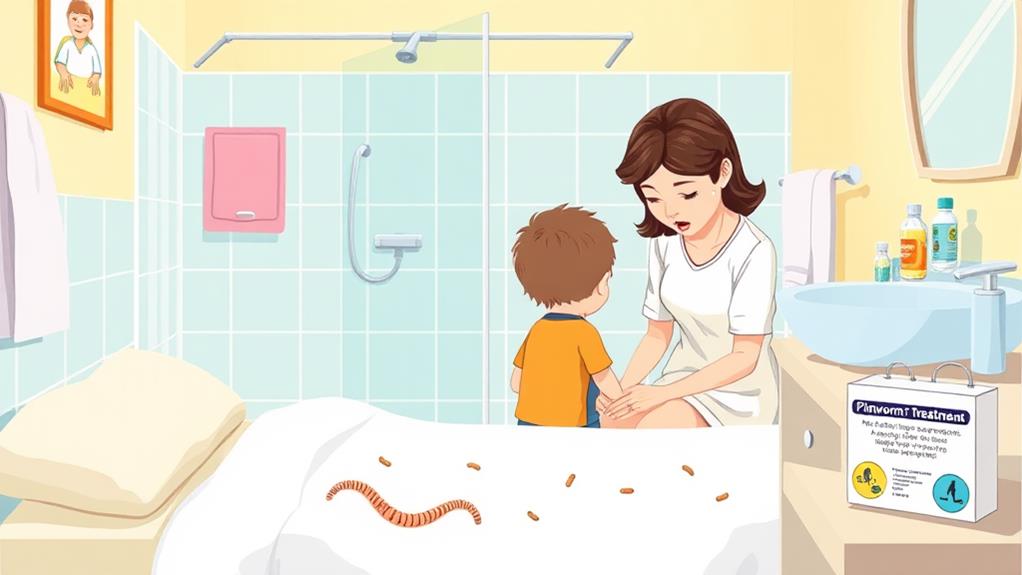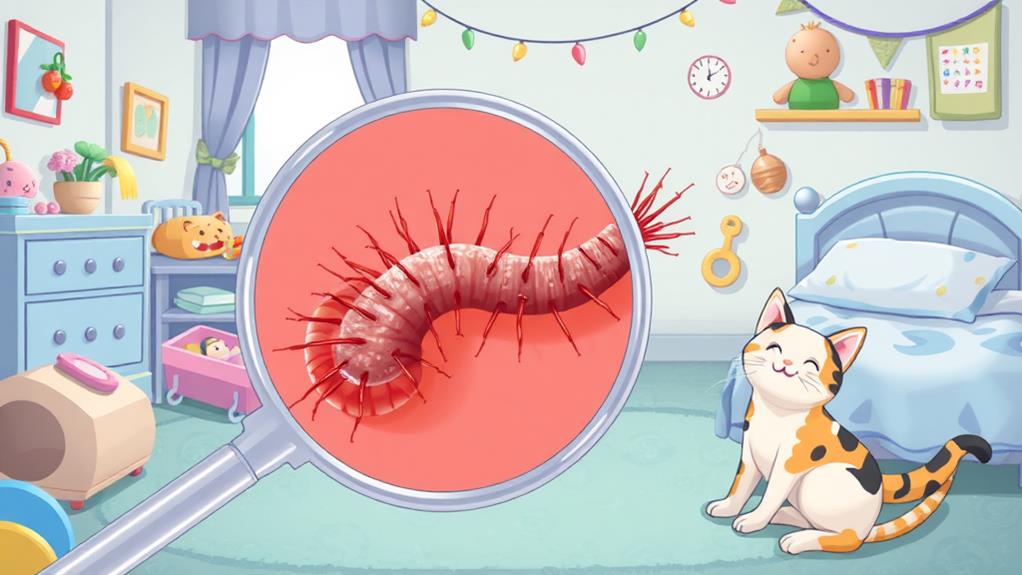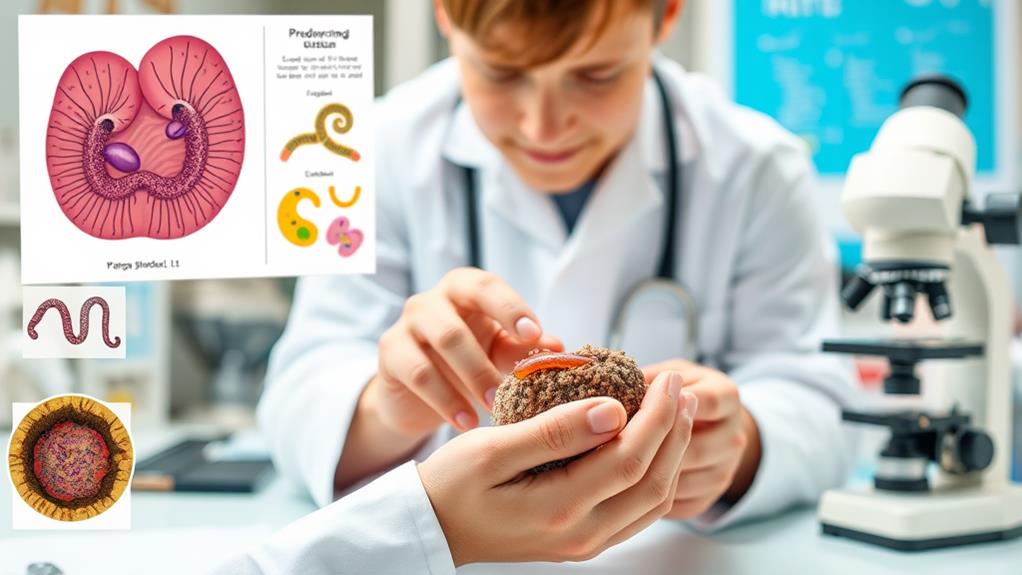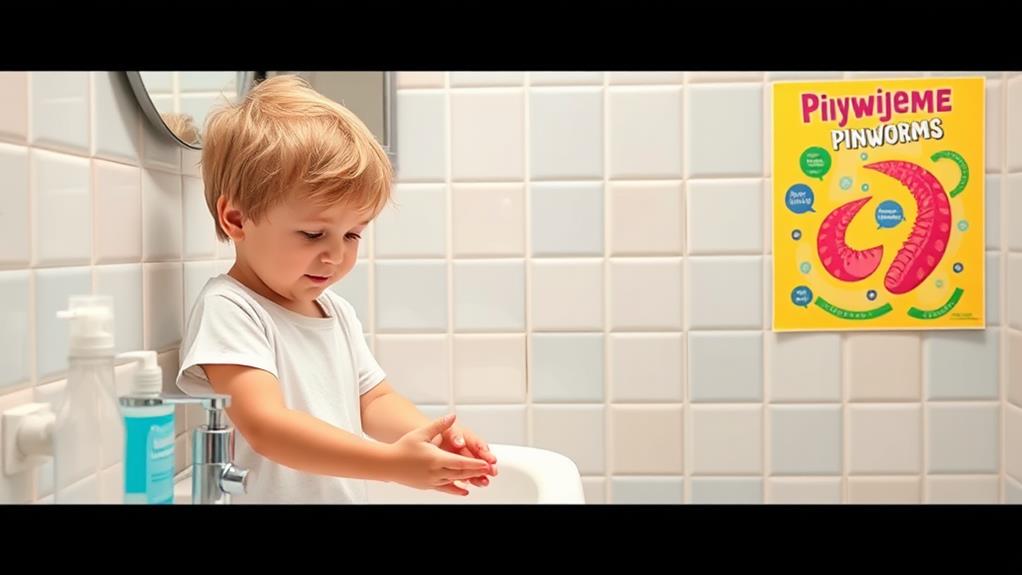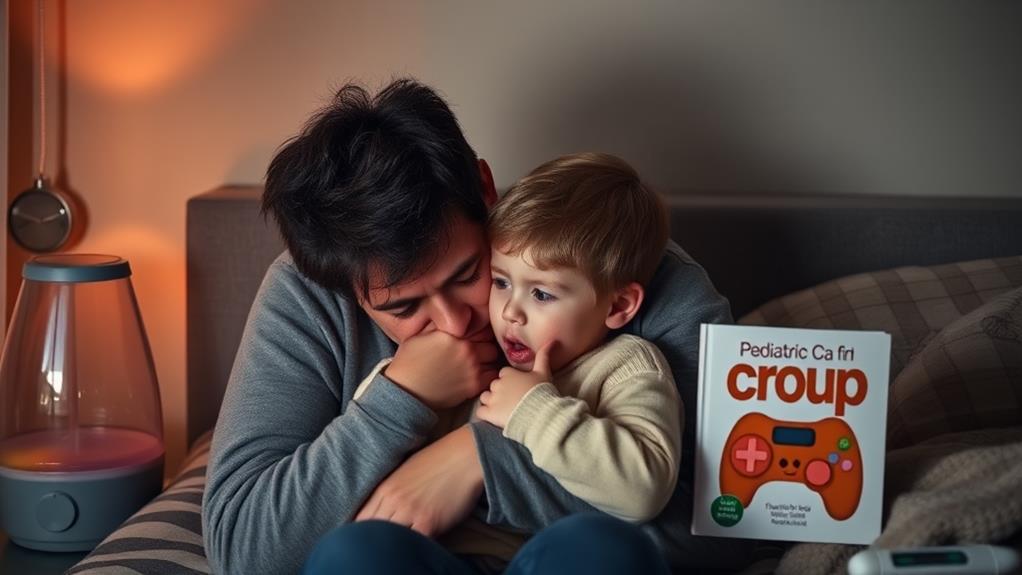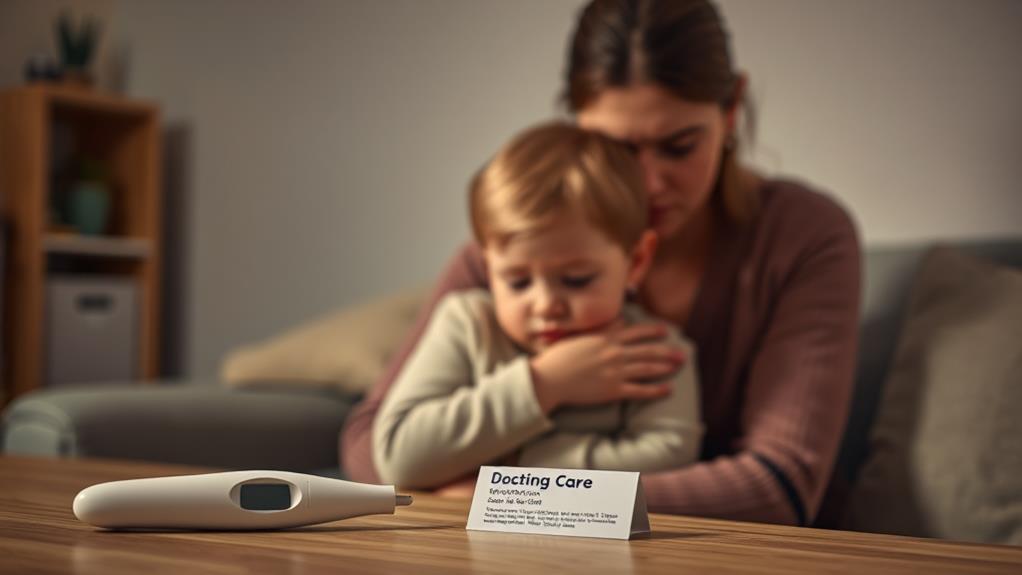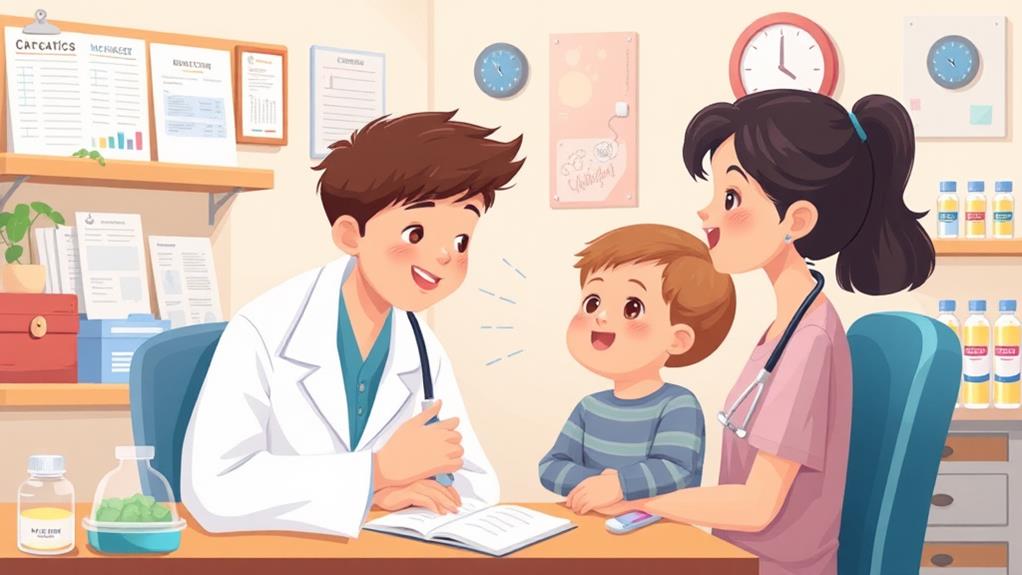When you notice small, flesh-colored bumps on your child's skin, it's natural to wonder about molluscum contagiosum. This common viral infection can be puzzling, especially with its dimpled center and tendency to cluster. Understanding the signs, causes, and treatment options is crucial for managing this condition effectively. You'll want to know how it spreads and what steps you can take to prevent it from worsening. Yet, the real challenge lies in recognizing when intervention is necessary. What should you consider next?
Understanding Molluscum Contagiosum
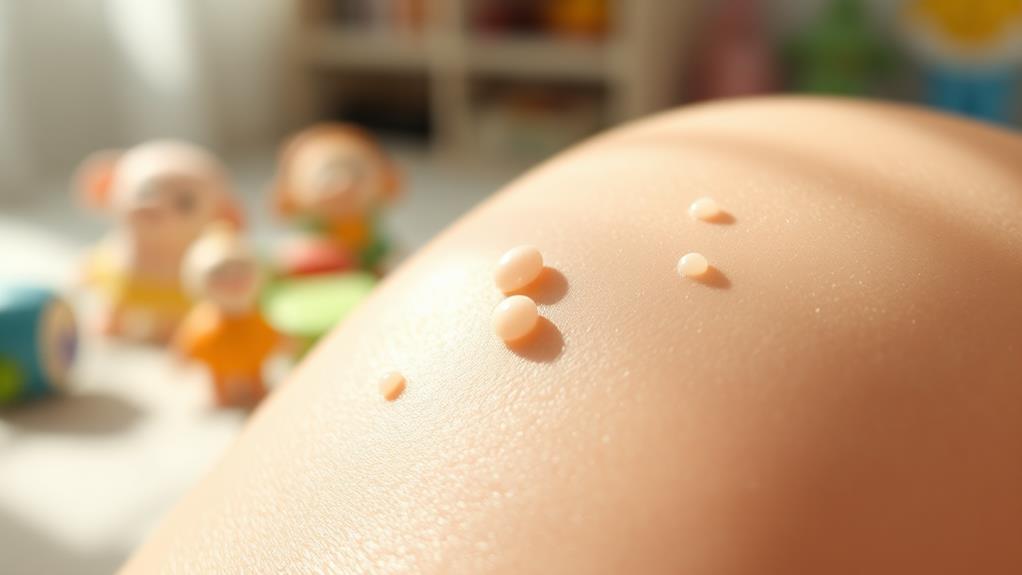
Molluscum contagiosum, a virus that primarily affects children, causes small, raised, painless bumps on the skin. You might notice these bumps appearing on your child's body, often in clusters. This virus spreads easily through direct skin-to-skin contact, which is why it's common in playgroups or during activities like swimming.
You don't have to worry too much, though; while it's contagious, it's generally harmless.
The bumps can show up anywhere, but they're most often found on the arms, legs, and belly. They might look a bit like warts or pimples, but they're unique in their appearance. The virus doesn't usually cause itching or pain, which can make it tricky to spot at first.
One important thing to remember is that molluscum contagiosum is self-limiting, meaning it often goes away on its own without treatment. However, it can take several months to a few years for the bumps to disappear completely.
Keeping an eye on your child and maintaining good hygiene can help prevent spreading the virus further. Understanding molluscum contagiosum is key to managing it effectively and ensuring your child remains comfortable.
Common Signs and Symptoms
What should you look for when identifying molluscum contagiosum in your child? The most common signs are small, raised, flesh-colored bumps on the skin.
These bumps can have a dimpled center, resembling tiny pearls. You might notice them popping up in clusters, often on areas like the arms, legs, or torso. They can range in size from a pinhead to about a quarter of an inch across.
While these bumps are mostly harmless, they can sometimes become itchy or red, which may lead to scratching. If your child scratches them, it's essential to keep an eye on the area, as this can cause the bumps to spread or become infected.
Molluscum contagiosum typically doesn't cause pain, but you should always check in with a healthcare provider if you're unsure. The bumps can last for several months and may take longer to disappear in some kids.
Causes and Risk Factors
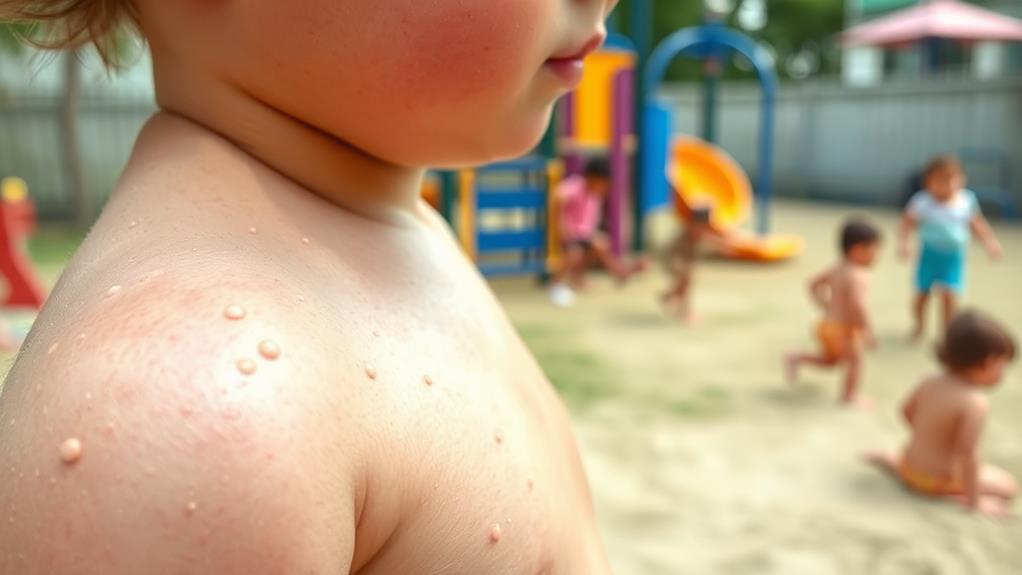
Understanding the causes and risk factors of molluscum contagiosum can help you take preventive measures for your child.
Molluscum is caused by a virus from the poxvirus family, which thrives in warm, moist environments. Your child might get the virus through direct skin-to-skin contact with an infected person or by touching contaminated objects like towels, toys, or swimming pool surfaces.
Children aged 1 to 12 are particularly susceptible, especially if they've a weakened immune system. Close-contact activities, like wrestling or sharing sports equipment, can also increase the risk.
If your child frequently plays in communal settings, like daycare or summer camps, they might be more exposed to the virus.
Another factor to consider is personal hygiene. Children who don't wash their hands regularly or who scratch their skin are more likely to contract molluscum.
Keeping your child's skin clean and dry can help reduce the risk. It's crucial to be aware of these factors so you can take proactive steps, like encouraging good hygiene practices and avoiding close contact with infected individuals.
Effective Treatment Options
When it comes to treating molluscum contagiosum in kids, several effective options are available. Your first step is to consult with a pediatrician for personalized advice.
They may suggest topical treatments, such as creams containing salicylic acid or imiquimod, which help to stimulate the immune system and encourage the body to fight off the virus. These creams are usually applied directly to the lesions and can be effective over time.
Another option is cryotherapy, where the doctor freezes the bumps using liquid nitrogen. This process might sound a bit daunting, but it's quick and can lead to noticeable results.
If your child has many lesions, a procedure called curettage may be recommended, where a small tool gently removes the bumps.
Keep in mind that while these treatments can speed up healing, molluscum often resolves on its own within 6 to 12 months.
It's important to maintain good hygiene practices, like encouraging your child not to scratch the lesions, to prevent spreading the virus.
With the right approach, you can help your child feel more comfortable and confident as they navigate through this condition.
Prevention Strategies for Parents

Preventing molluscum contagiosum in kids starts with simple yet effective strategies that every parent can implement.
First, encourage your child to wash their hands regularly with soap and water, especially after playing outside or touching shared surfaces. Hand hygiene is crucial in stopping the virus from spreading.
Next, teach your kids not to share personal items like towels, clothing, or sports equipment. This helps minimize contact with infected skin.
When your child is active in sports or swimming, remind them to wear rash guards or swimsuits that cover the skin, as this can provide a barrier against the virus.
It's also essential to keep an eye on any bumps or unusual skin changes on your child. If you notice something that looks like molluscum, consult your pediatrician for advice.
Lastly, encourage your child to avoid picking at or scratching any skin lesions, as this can spread the virus to other areas of their body.


